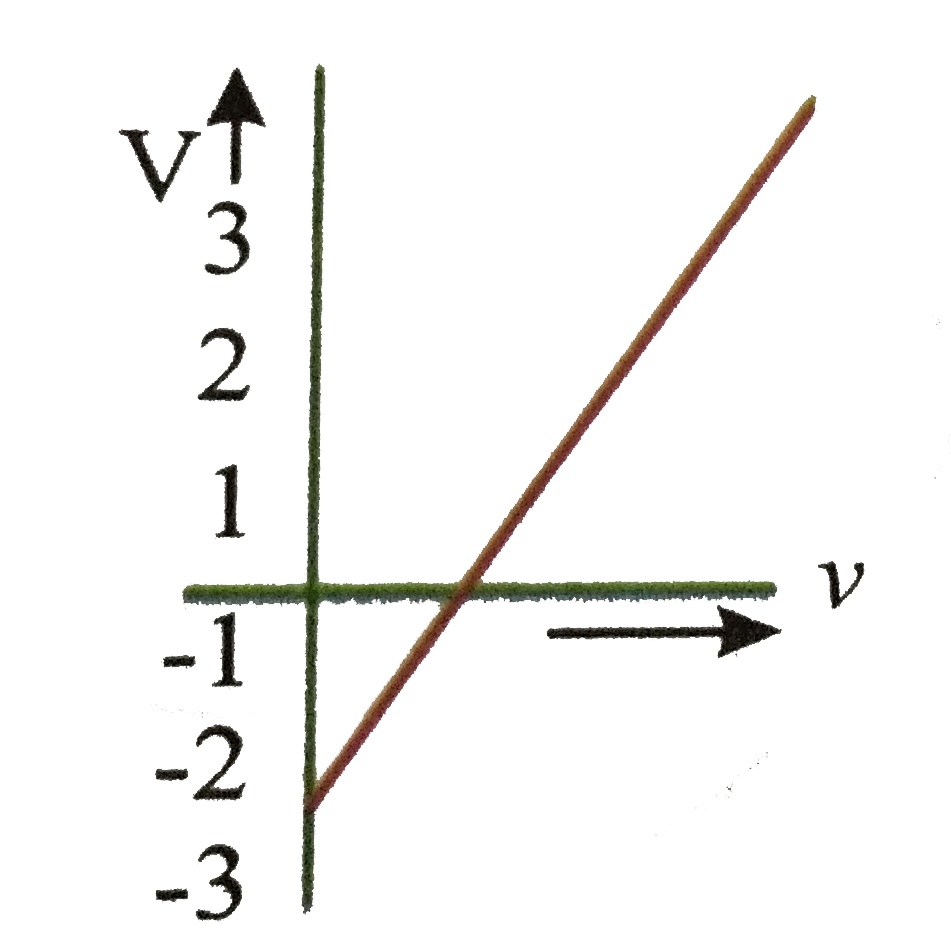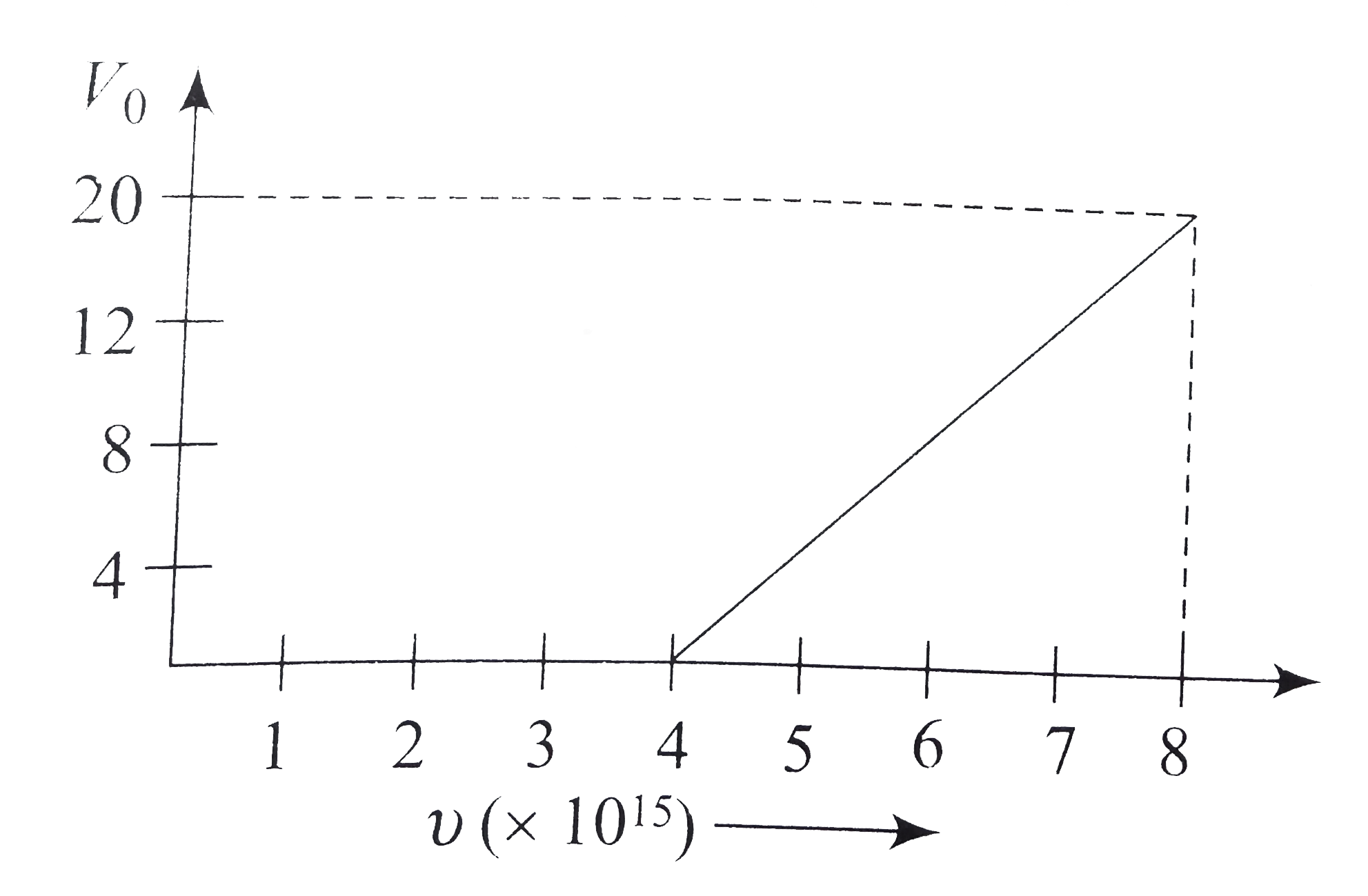For a photocell, the work function is ϕ and the stopping potential is Vs . The wavelength of the incident radiation is
hcϕ
hcϕ−eVs
hcϕ+eVs
hceϕ+Vs
The correct Answer is:C
To find the wavelength of the incident radiation for a photocell with a given work function (φ) and stopping potential (Vs), we can follow these steps:
1. Understand the Photoelectric Effect Equation:
The maximum kinetic energy (KE_max) of the emitted electrons can be expressed as:
KEmax=hν−ϕ
where h is Planck's constant, ν is the frequency of the incident radiation, and ϕ is the work function.
2. Relate Kinetic Energy to Stopping Potential:
The maximum kinetic energy can also be expressed in terms of the stopping potential (Vs):
KEmax=eVs
where e is the charge of the electron.
3. Set the Two Expressions for KE_max Equal:
Since both expressions represent the maximum kinetic energy, we can set them equal to each other:
eVs=hν−ϕ
4. Express Frequency in Terms of Wavelength:
The frequency ν can be related to the wavelength λ using the equation:
ν=cλ
where c is the speed of light.
5. Substitute Frequency into the KE Equation:
Substitute ν in the equation from step 3:
eVs=h(cλ)−ϕ
6. Rearrange the Equation to Solve for Wavelength:
Rearranging gives:
hcλ=eVs+ϕ
Now, isolate λ:
λ=hceVs+ϕ
7. Final Expression for Wavelength:
Thus, the wavelength of the incident radiation is:
λ=hceVs+ϕ
The maximum kinetic energy (KE_max) of the emitted electrons can be expressed as:
KEmax=hν−ϕ
where h is Planck's constant, ν is the frequency of the incident radiation, and ϕ is the work function.
The maximum kinetic energy can also be expressed in terms of the stopping potential (Vs):
KEmax=eVs
where e is the charge of the electron.
Since both expressions represent the maximum kinetic energy, we can set them equal to each other:
eVs=hν−ϕ
The frequency ν can be related to the wavelength λ using the equation:
ν=cλ
where c is the speed of light.
Substitute ν in the equation from step 3:
eVs=h(cλ)−ϕ
Rearranging gives:
hcλ=eVs+ϕ
Now, isolate λ:
λ=hceVs+ϕ
Thus, the wavelength of the incident radiation is:
λ=hceVs+ϕ
Topper's Solved these Questions
- ELECTRONS AND PHOTONS Book:MARVEL PUBLICATIONChapter:ELECTRONS AND PHOTONS Exercise:TEST YOUR GRASP - 17
Explore 15 Videos
- ELECTROMAGNETIC INDUCTION AND ALTERNATING CURRENTS Book:MARVEL PUBLICATIONChapter:ELECTROMAGNETIC INDUCTION AND ALTERNATING CURRENTS Exercise:TEST YOUR GRASP - 16
Explore 30 Videos
- ELECTROSTATICSBook:MARVEL PUBLICATIONChapter:ELECTROSTATICSExercise:TEST YOUR GRASP
Explore 20 Videos
Similar Questions
What amount of energy sould be added to an electron to reduce its de Broglie wavelength λ1=550nm incident on it, causing the ejection of photoelectrons for which the stopping potential is Vs1=0.19V. If the radiation of wavelength λ2=190nm is now incident on the surface, (a) calculate the stopping potential VS2, (b) the work function of the surface, and (c) the threshold frequency for the surface.
View SolutionFrom the graph shown, the value of work function if the stopping potential (V), and frequency of the incident light vare on y and x-axes respectively is

View Solution
Knowledge Check
In an experiment of photo electric emission for incident light of 4000A0,the stopping potentail is 2V.If the wavelength of incident light is made 300A0, then the stopping potential will be
ALess than 2 voltBMore than 2 voltC2 voltDzeroThe work function of a surface of a photosensitive material is 6.2eV. The wavelength of the incident radiation for which the stopping potential is 5V lies in the
Aultraviolet regionBvisible regionCinfrared regionDX - ray regionAn electron of work function 1.4 eV is emitted with a velocity 5×106 m/s . The wavelength of the incident radiation is
A0.017 ÅB1.7 ÅC17 ÅD170 Å
Figure show the variation of the stopping potential (V0) with the frequency (v) of the incident radiations for two different photosensitive matererial M1 and M2 What are the values of work functions for M1 and M2 respectively

View SolutionIn a photoelectric effect experiment, the stopping potential is 0.71 V and corresponding wavelength of incident photon was 491 nm. Now the stopping potential of battery is increased to 1.4 V. Find new wavelength of incident photon ?
View Solution
When a high frequency electromagnetic radiation is incident on a metallic surface, electrons are emitted from the surface. Energy of emitted photoelectrons depends only on the frequency of incident electromagnetic radiation and the number of emitted electrons depends only on the intensity of incident light.
Einstein's protoelectron equation [Kmax=hv−ϕ] correctly ecplains the PE, where υ= frequency of incident light and ϕ= work function.
Q. For photoelectric effect in a metal, the graph of the stopping potential V0 (in volt) versus frequency υ (in hertz) of the incident radiation is shown in Fig. The work function of the metal (in eV) is.
View SolutionThe photoelectric work function of the emitter of a photocell is 3.63 eV . The frequency of incident light radiation if the stopping potential of the emitter is 3 volt , is
View SolutionWhen a metallic surface is illuminated with radiation of wavelength λ , the stopping potential is V . If the same surface is illuminated with radiation of wavelength 2λ , the stopping potential is V4 . The threshold wavelength for the metallic surface is
View Solution